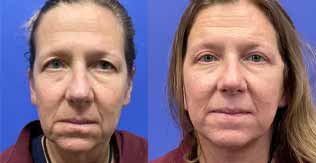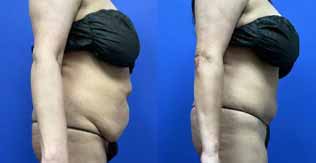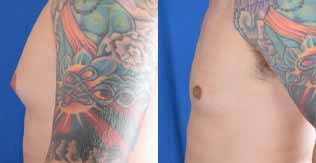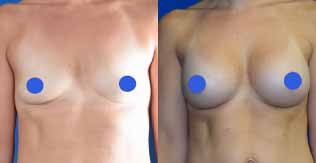Rhinoplasty
Offered at our convenient location in Denver
Rhinoplasty is the medical term for a “nose job,” a surgical procedure that adjusts the structure and appearance of the nose. Surgical correction has the power to serve both cosmetic and medical purposes. For example, a rhinoplasty can correct both breathing problems and improve the overall shape and size of the nose to achieve facial balance. Patients wish to undergo this procedure to address concerns of a misshapen bridge, overly large nostrils, wide nose, bumps, or septal deviation.
If you’re experiencing dissatisfaction with the appearance of your nose, or you are having trouble breathing, contact us for a consultation at our offices in Denver, CO. Dr. John Millard, Dr. David Hendrick and staff are committed to helping you get the nose you want. Call us at (303) 792-5665 or complete an online inquiry form to book your personal consultation at Millard Plastic Surgery Center.
Contents
About Rhinoplasty
The prefix rhino- means nose, while the suffix -plasty means to mold or shape. The procedure reshapes the bone and cartilage of the nasal dorsum to improve the look and function of the nose. Additionally, rhinoplasty can adjust nose size, lift or shape the tip, or straighten the bridge. [1] A newly reconfigured nose structure allows you to breathe without congestion, alleviates pressure in the nasal cavity, and even improves recurring sinus headaches.
What are the Benefits of a Nose Job?
A nose job can improve quality of life. Dr. Hendrick can tailor your new nose’s shape to your aesthetic preferences and respiratory comfort level.
- Enhances & refines shape
- Corrects breathing problems
- Complements other facial features
- Reshapes the nasal profile, nostrils and/or tip of the nose
- Contributes to better self-image and confidence
See what’s in store with your individualized treatment plan by scheduling your consultation at Millard Plastic Surgery. We’ll go over the procedure in great detail so that you can make a well-informed decision as to whether rhinoplasty is right for you.
Candidates for Rhinoplasty
Everyone’s anatomy is different, and your reason for seeking rhinoplasty is personal. And, if the size or shape of your nose is making you self-conscious and holding you back, this procedure could benefit you greatly – on a purely cosmetic basis. Other criteria include the following. [2]
- Non-smoker (or able to quit)
- Unhappy with your nose’s overall shape and size
- Breathing/airflow problems
- Correcting damage from nasal trauma
- In good health without severe underlying medical conditions
- Realistic goals and expectations of surgery outcomes
A brand new nose is worth it. Don’t hesitate to schedule an appointment at our offices in Denver. You can speak with our staff by calling (303) 792-5665.
Personal Consultation
Dr. Hendrick brings vast surgical experience to the table, and his offices proudly serve communities in Denver, wider Colorado localities, and even out-of-state and international patients. He finds it truly rewarding to perform procedures that transform patients’ lives.
First, we’ll ask you questions regarding your health, any previous surgeries you’ve undergone, and any medications and supplements that you are currently taking. Dr. Hendrick will then ask you to discuss your concerns and frustrations with your nose and the appearance you hope to achieve. He will record this information to design an effective treatment plan uniquely tailored to you.
Expectation vs. Reality
It is important to note that while there are many rhinoplasty techniques available to adjust the nose in every dimension, there will always be some potential limitations to what can be achieved. On occasion, patient anatomy will restrict the abilities of even the most skilled surgeon.
At your personal consultation, Dr. Hendrick will candidly explain what can be accomplished so you have realistic expectations and optimal satisfaction.
Preparation
Dr. Hendrick and our staff will provide you with a specific list of instructions on how to prepare for surgery. It is essential to follow instructions to ensure your rhinoplasty experience is safe and successful. Below are a few things that may be included.
- Quit Smoking
Be prepared to stop at least one week before your rhinoplasty. This habit compromises your ability to heal and may create complications during recovery.
- Buy & Prepare Soft Food
Your after-surgery care will require you to adjust your diet temporarily.
- Arrange a Ride Home
Give Your car keys to a trusted friend or family member as you will not be able to drive yourself home.
- Fill your Prescriptions
Go to your local pharmacy and obtain the necessary medications beforehand.
- Fast as Instructed
Do not eat anything after midnight on the night before your surgery.
- Avoid Wearing Makeup
Refrain from wearing makeup on the day of your rhinoplasty.
The Rhinoplasty Procedure
Dr. Hendrick will review your treatment plan and go over any last remaining items with you. We understand that you may have questions and our staff is here to reduce any anxiety you may have by answering them all. Before your procedure, Dr. Hendrick will mark your nose with a surgical marker to guide the procedure.
Once you’re in the operating room, an anesthesiologist will administer the appropriate anesthesia to ensure your comfort. The exact approach to your rhinoplasty will depend on your nose and desired results. Your rhinoplasty will take about a few hours to complete, though some more involved techniques may take longer.
Rhinoplasty Techniques
There are two main rhinoplasty techniques: open and closed. In the past, a closed rhinoplasty was very common, but it allows poor visibility of the nasal construct and minimal control over the shaping of the tip.
Modern rhinoplasty patients are very discerning and particular about how they want their noses to look. An open approach provides direct visualization and access to adjust the dorsum, perform precise surgical maneuvers and create a perfectly-refined tip. Open rhinoplasty uses a small incision along the columella that virtually disappears after recovery. The skin of the nasal tip is then flipped up to expose the cartilage framework underneath, which is adjusted via numerous defined rhinoplasty techniques.
There are numerous rhinoplasty outcomes a skilled surgeon can achieve. Below, we explain some of the most commonly-performed techniques and concepts used to shape and mold the nose.
Dorsal Hump Reduction
Most rhinoplasty patients want a smaller nose, often requiring a reduced “bump.” Under direct visualization, cartilage and nasal bones are reduced through a careful process called shaving. However, once this is complete, the nose will often widen and flatten. (Think about how it would look to cut the top off a pyramid.) As a result of this aesthetic shift, Dr. Hendrick will skillfully reposition the bones inward to further reduce the nose and achieve a pleasing contour.
Lower Lateral Cephalic Trim
A large or bulbous tip is often caused by a large piece of cartilage that needs to be trimmed. During a rhinoplasty, this trimming is done in such a manner to leave behind only what is required to maintain structural support. Utilizing this technique will ensure the tip is as refined as possible; this will also help elevate the tip of the nose so it doesn’t droop down, for an appropriate angle between your nose and lips.
Donor Grafts
Cartilage grafts are commonly used to help maintain the structure and integrity of the new nose. These can include strut grafts to support the tip, tip grafts for increased projection and shaping, or alar rim grafts to shape the nostrils. Donor cartilage is usually taken from the ear or the rib.
Nostril Narrowing
A “Weir resection” removes some of the nostril skin to narrow the nose, hiding the incision along the base and in the crease. Some patients will know before their rhinoplasty that their procedure will require this technique. However, Dr. Hendrick will use his artistic eye to evaluate whether to employ this technique during surgery.
Recovery
You are free to go home after your rhinoplasty procedure. Bruising and swelling are common but should be significantly reduced by week three. However, residual swelling in the nasal tip can be persistent and may not fully resolve for six to twelve months after the rhinoplasty. Rhinoplasty patients wear a nasal splint for a week with splint removal at a follow-up appointment. During your recovery, we will ask you to follow these and other directions.
- Avoid physically demanding activities.
- Eat soft foods during this time.
- Avoid drinking through a straw. [3]
- Take about a week off from work.
- Sleep on your back for the next several days.
- Keep your head elevated while resting.
- Ice the area to reduce swelling and bruising.
Dressings, splints, and sutures on the nose can be removed on the seventh day. After around 7-10 days, most patients feel they can resume normal activities.
Results
Rhinoplasty surgery enhances nose shape and improves breathing. Please be patient, as gradual improvements in the nose will continue to develop in the coming months. While the swelling will subside within a few weeks, it may take about 12 months for your new nasal contours to emerge fully. [3]
Cost of Rhinoplasty in Denver, CO
We assess the cost of each procedure individually. Find contentment with a newly-shaped nose. To book your personal consultation at Millard Plastic Surgery Center, call (303) 792-5665 or complete a form for more information.
Read more about plastic surgery in Denver by following us on Facebook, Instagram, YouTube, and our blog!
FAQ
Will insurance cover the cost of my nose job?
We do not accept any form of insurance since we are a cosmetic practice.
Will a rhinoplasty improve my breathing?
Nasal breathing problems are relatively common, and rhinoplasty can quickly correct them. While these problems are typically considered medical and not cosmetic, they must be addressed during every rhinoplasty.
Are results from a rhinoplasty permanent?
It will take around 12 months for you to see your final rhinoplasty results. After this, the results are permanent. The aging process affects the entire face, and your new nose will age naturally with the rest of your face. A healthy lifestyle and sun protection will help extend your results.
References
- Kandathil, C. K., Saltychev, M., Patel, P. N., & Most, S. P. (2020). Natural History of the Standardized Cosmesis and Health Nasal Outcomes Survey After Rhinoplasty. The Laryngoscope, 131(1). https://doi.org/10.1002/lary.28831
- Rhinoplasty Candidates. (n.d.). American Society of Plastic Surgeons. Retrieved August 20, 2021, from https://www.plasticsurgery.org/cosmetic-procedures/rhinoplasty/candidates
- Wähmann, M. S., Bulut, O. C., Bran, G. M., Veit, J. A., & Riedel, F. (2018). Systematic Review of Quality-of-Life Measurement After Aesthetic Rhinoplasty. Aesthetic Plastic Surgery, 42(6), 1635–1647. https://doi.org/10.1007/s00266-018-1199-6
